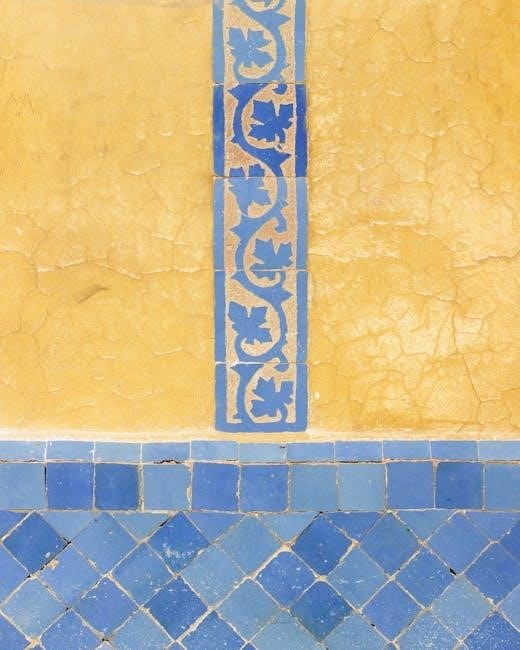Selecting the perfect wall art size can transform your space, but it’s often challenging. This guide helps you choose the right size, from standard to custom options, ensuring your art complements your room’s aesthetics and layout. Whether you’re a first-time buyer or a seasoned collector, our comprehensive tips will guide you in making informed decisions to elevate your surroundings with stunning wall art.

Understanding Standard Wall Art Sizes
Standard wall art sizes include common dimensions like 4×6, 5×7, 8×10, 11×14, 16×20, and 20×30 inches, offering versatility for small spaces, statement walls, and everything in between.
Common Dimensions and Their Uses
Common wall art dimensions include 4×6, 5×7, and 8×10 inches for small spaces like shelves or desks. Medium sizes such as 11×14 and 16×20 inches are ideal for accentuating furniture or filling small walls. Larger sizes like 20×30 and 24×36 inches make bold statements in living rooms or entryways. These standard dimensions offer versatility, ensuring art fits seamlessly into any room’s decor. Understanding these sizes helps in choosing pieces that complement the space, whether for subtle accents or dramatic focal points. This guide simplifies selecting the perfect size for any wall art goal.
Popular Sizes for Different Spaces
Popular wall art sizes vary by room type and purpose. Living rooms often feature larger pieces, such as 16×20 or 20×30 inches, to create focal points. Bedrooms benefit from smaller, intimate sizes like 11×14 or 16×20 inches. Hallways and entryways shine with vertical art, such as 24×36 inches, to draw the eye upward. Small spaces like kitchens or bathrooms can use 8×10 or 12×12 inches for subtle decor. Offices or studios may opt for 18×24 inches to balance productivity and aesthetics. Choosing the right size ensures art complements the room’s function and style, creating a harmonious space.

How to Measure Your Wall for Art
Measure your wall’s width and height to determine the ideal art size. Consider the space above furniture, ensuring the art occupies 2/3 to 3/4 of the wall area for balance.
Calculating Ideal Dimensions
To find the perfect size for your wall art, measure the width and height of your wall. A general rule is for the art to occupy 60-70% of the wall space. If placing above furniture, the artwork should be 2/3 to 3/4 the width of the piece. For larger walls, consider the room’s purpose—living rooms often need bigger art, while hallways or bedrooms may suit smaller pieces. Use a wall art size chart to visualize proportions and ensure harmony. This approach guarantees your art complements the space, creating a balanced and visually appealing atmosphere.
Considering Furniture and Layout
When choosing wall art, consider the room’s furniture and layout. The size of the art should complement the space, leaving enough room for other decorative elements. If placing art above furniture, it should be 2/3 to 3/4 the width of the piece. For example, a sofa that is 7 feet wide should have art that is 4 to 5 feet wide. Additionally, the room’s purpose influences size—larger art suits living rooms, while smaller pieces fit hallways or bedrooms. Always balance the scale of the art with the room’s decor to create a harmonious and visually appealing environment.

Aspect Ratios and Visual Balance
Aspect ratios and visual balance are crucial for harmonious wall art placement. Proper proportions ensure the art complements the room’s aesthetics, creating a cohesive and visually appealing environment.
Importance of Proportions
Proportions are key to ensuring wall art neither overwhelms nor underwhelms a space. The right size creates balance, with art typically covering 60% of the wall. Measure carefully, considering furniture and layout. A piece that’s too small may get lost, while one too large can dominate. Use masking tape to visualize dimensions on the wall. Proper proportions enhance the room’s harmony, making the space feel cohesive and visually appealing. Always align the art’s size with the room’s scale for a polished, professional look that elevates the entire area’s aesthetic.
Matching Art to Room Aesthetics
Matching wall art to your room’s aesthetic ensures a cohesive and visually pleasing environment. Consider the room’s style, such as modern, traditional, or minimalist, and select art sizes that complement it. For instance, smaller frames like 11×14 inches suit intimate spaces, while larger pieces like 24×36 inches fit open, contemporary areas. Aspect ratios also matter—horizontal art enhances wide rooms, while vertical pieces elongate low ceilings. Aligning the art’s proportions with the room’s decor and purpose, such as serene landscapes for bedrooms or bold statements for living rooms, creates harmony. Custom sizes can further tailor the art to unique spaces and styles, ensuring a perfect fit.

Choosing the Right Size for Your Room
Selecting the ideal wall art size depends on the room’s purpose and style. Larger pieces like 30×40 inches suit open spaces, while smaller frames, such as 24×36 inches, fit cozy areas.
Living Room and Dining Room
For a living room or dining room, choose wall art that complements the space’s focal points, such as a fireplace or dining table. A large piece, like 30×40 inches, works well above a sofa or fireplace, while a 40×60-inch canvas can dominate an open area. In dining rooms, opt for slightly smaller sizes, such as 24×36 inches, to avoid overwhelming the space. Ensure the art’s proportions align with the room’s dimensions and furniture, creating a balanced aesthetic. Consider the aspect ratio to enhance the room’s layout, whether it’s a landscape for wide spaces or a portrait for taller walls.
Bedroom and Hallway
In bedrooms, wall art should create a calming atmosphere; Opt for smaller sizes, like 18×24 inches, above a bed or dresser. For larger bedrooms, a 30×40-inch piece can serve as a focal point. Hallways benefit from narrower, vertical art, such as 16×20 inches, to fit the space. Ensure the art’s size aligns with the room’s scale and furniture, avoiding pieces that overwhelm. Consider the aspect ratio to enhance the room’s layout, whether it’s a landscape for wide spaces or a portrait for taller walls, ensuring visual harmony in these intimate areas.

Using a Wall Art Size Chart
A wall art size chart simplifies choosing the right dimensions. Use it to visualize how prints fit in your space, ensuring proportions match your room’s aesthetic perfectly.
How to Read and Apply Size Charts
Reading a wall art size chart involves matching your wall dimensions to recommended art sizes. Start by measuring your wall and noting its height and width.
Compare these measurements to the chart’s guidelines to find suitable art dimensions. Pay attention to aspect ratios and ensure the art aligns with the room’s purpose.
For example, larger pieces work well in living areas, while smaller art suits hallways. Use the chart to visualize how the art will fit and enhance your space’s aesthetic.
This step-by-step approach ensures a perfect fit and balanced design.
Visualizing Art in Your Space
Visualizing wall art in your space is crucial for making the right choice. Use size charts and digital tools to preview how different sizes will look on your walls.
Many online platforms offer live viewing options, allowing you to see art in your room virtually.
Measure your wall and furniture, then compare with the art’s dimensions to ensure proportion and balance.
Consider the room’s lighting and angles to maximize the art’s impact.
This step helps you make informed decisions and guarantees a perfect fit for your space.

Custom and Non-Standard Sizes
Custom and non-standard sizes offer tailored solutions for unique spaces, ensuring your wall art fits perfectly and complements your room’s aesthetics, providing a personalized touch.
When to Opt for Custom Canvas
Custom canvas sizes are ideal for unique spaces or specific design needs. If your wall has an unusual dimension or shape, a custom canvas ensures a perfect fit. Consider custom sizes for statement pieces in stairways, foyers, or rooms with awkward layouts. Consider custom canvas options when standard sizes don’t align with your vision or space constraints. This allows you to tailor the art to your room’s proportions and aesthetic. Use wall art size charts to visualize and measure before ordering. Custom canvases also let you match specific themes or aspect ratios, ensuring your art stands out and complements your interior design seamlessly.
Tailoring Art to Unique Spaces
Tailoring art to unique spaces ensures a cohesive and impactful look. Measure your wall and consider the room’s layout to choose art that complements its dimensions. For narrow areas, vertical pieces work best, while horizontal art suits wide spaces. Use wall art size charts to visualize and select proportions that align with your room’s aesthetic. Tailored art enhances unique spaces like staircases, foyers, or irregularly shaped walls. By matching the art’s proportions to your space, you create a balanced and visually appealing environment that reflects your personal style and enhances the room’s functionality. This approach ensures your art stands out without overwhelming the area.
Selecting the right wall art size is crucial for enhancing your space’s aesthetics. By understanding standard sizes, measuring your walls, and considering room layouts, you can make informed decisions. Whether choosing standard or custom art, ensure it complements your space. Use size charts to visualize and balance proportions, transforming your walls into stunning focal points. Remember, the right size elevates your surroundings, creating a harmonious and visually appealing environment that reflects your personal style. With these insights, you’re ready to find the perfect wall art size for your home or office, ensuring a beautiful and cohesive design.
